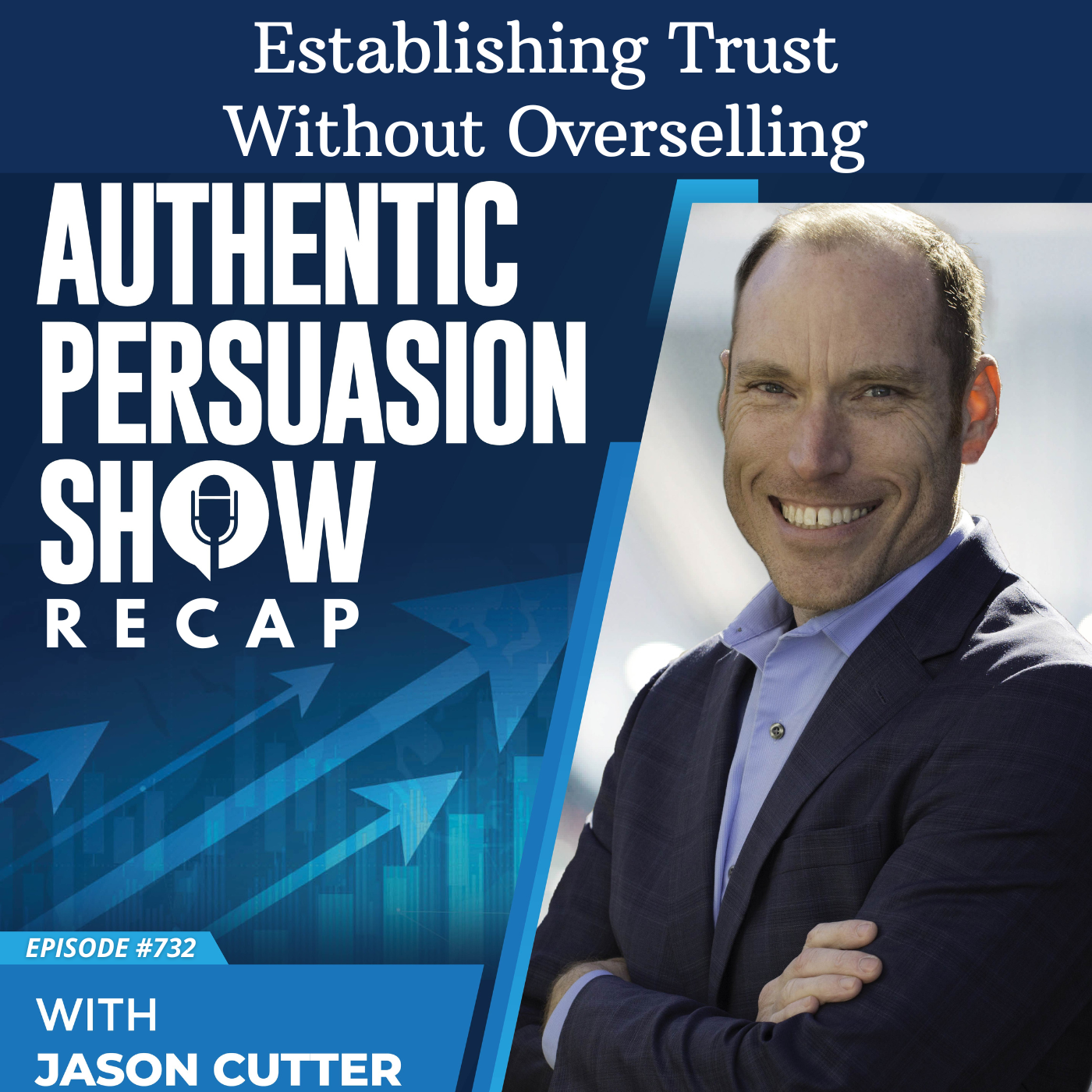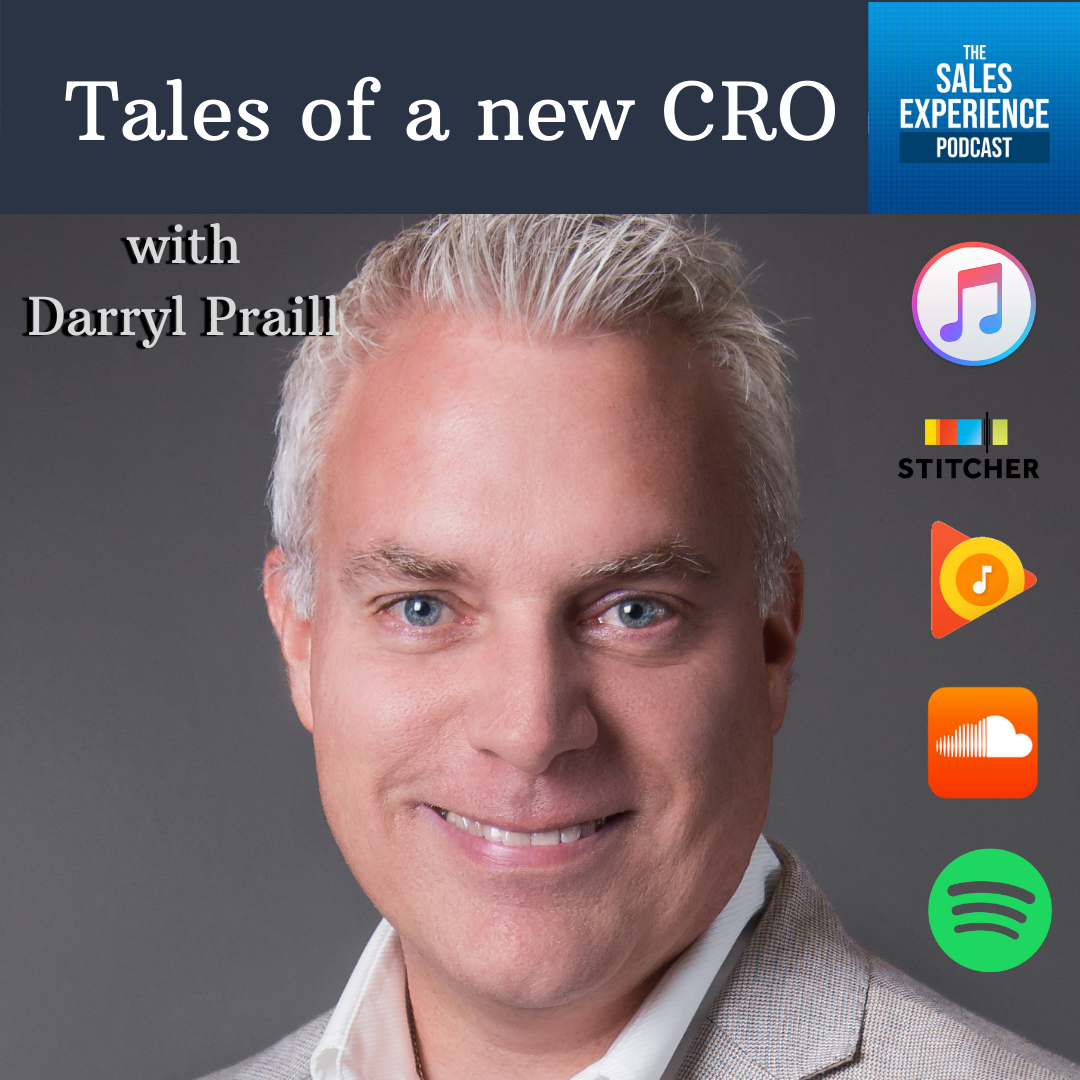Show Notes
This is the fourth, and final, segment of the conversation I had with Eric.
In Part 4, Eric and I talk about:
- Moving your business from Survival to Stability
- What is the right amount of data?
- Making sure your data is accurate – how often should it be verified/updated?
Download The Power of Authentic Persuasion ebook
Enroll in the Authentic Persuasion Online Course
Connect with Jason on LinkedIn
Connect with Eric on LinkedIn
Eric’s Bio:
Eric is the Senior Vice President & General Manager for Credit Solutions at Infogroup. Credit.net provides in-depth information on businesses of all sizes, including small businesses:
•To empower people with the ability to make smarter business credit decisions.
•Identify opportunities in the industry, unmet customer needs, core competencies of Infogroup
•Cross-selling to existing customers, and partnership possibilities
•Create detailed roadmap including resources and investments needed
•Product Improvements envisioned, partnerships channels, go to market and sales changes, etc.
•Refine product offerings and develop new solutions based on market feedback
•Collaborate across Infogroup to drive cross-selling and leverage the broader platform of services.
•Work with the executive leadership team and present to Board growth strategies, investment requirements, and acquisitions.
Eric holds a bachelor’s of arts degree in economics and government from Skidmore College in New York. His post-graduate studies were in business administration, management, and operations from Sheffield Hallam University in the United Kingdom.
Eric’s Links:
LinkedIn: https://www.linkedin.com/in/erickider/
Infogroup: https://www.linkedin.com/company/infogroup/
Credit.net: https://www.linkedin.com/company/credit-net/about/
Facebook: https://www.facebook.com/Infogroup/
Twitter: https://twitter.com/Infogroup
E179 – Transcript
Jason: Alright. Welcome to the final part of my conversation with Eric Kider of Infogroup. We are having a long great conversation at this point. You’re catching it part form, make sure but listen to part one, two and three, but we’re talking about performance-based profitability marketing. It’s interesting because as we’re recording this, I’m just thinking like how valuable this is, whether you get data from them or not, you know wherever you’re getting your data from or whatever marketing you’re doing or whatever your sales strategy is, it’s all about the value in knowing where you want to go, knowing who your clients are and making sure that you’re working internally or externally to accomplish those goals through your marketing efforts, through your budget, through your dollars spent. So make sure you do that no matter what. Again, not as a commercial for Infogroup, but definitely a valuable service. I’ve used it with so many of my clients and my own role in other organizations and so just make sure you’re always looking at the best options for you in your organization and what fits. So here we go, part four, enjoy.
Jason: Then you know, working backwards from there and being smart and sending out quality messages to the correct contacts instead of, you know, pray and spray model, then you know, then it makes sense, right? Even if you’re buying more expensive data, you’re doing more expensive mailers or digital marketing, then you know, as long as you’re meeting that thousand dollars cost per acquisition or whatever you set, then the numbers make sense.
Eric: Absolutely. Well and that’s why, you know, a lot of times people who are in this space, you know, let’s kind of talk about the small and middle-market customer segment out there. And again, middle-market is this kind of nebulous term cause you could, you know, you really don’t necessarily know the definition because everybody in the market today has different terminology and definitions of what is or is not a middle-market sized company. But I look at companies that are in business that, you know, if you think about their first, you know, one to five years being in business, Jason, they’re trying to survive, right? They’re not thinking about credit or cash flow or their exposure in their accounts receivables. They’re first is trying to get customers into their establishment or buying their products in order to stay in business. So that one to five year window is just surviving, right?
Eric: You know, turning their dream and their passion into a reality. But then after the kind of the three to five to six-year window, all of a sudden they start reeling. You know, realizing that, you know, it’s time for us to maybe start thinking about our cash flow. You know, especially if you want to start making some capital investments if we want to start expanding. And that’s kind of where you start seeing customers regardless of size or what product or what industry they’re in. They all go through the same process of trying now to figure out what type of credit or risk types of decisioning and criteria and methodologies do they apply in order to balance how much is too much, how much is too little. And that’s kind of where we, you know, we look at bringing that whole dynamic of profitability based prospecting into the conversation.
Eric: Cause that’s the best way for us that we’ve seen helping small businesses in realizing that credit and risk don’t need to be a showstopper or a business slowdown factor. In fact, it should be seen as a great compliment to improving your growth in a more quality-oriented manner. And that yes, when you start hitting the seven to 10-year window and you start growing your revenues from five to 15 to 25 million and you start growing your employee base from five people to 25 to 50 you start realizing that ultimately you start getting a bit more savvy to what type of applications and systems and processes do you leverage. But the information itself still becomes part of your core, right? That data and information will always be the fuel that enables your platforms and processes to perform its best and if you don’t maintain or keep that data as fresh and as current and up to date as possible, then ultimately you’re just, unfortunately, cutting yourself short for what could be a very longterm profitable growth agenda.
Jason: And without this sounding like a complete sales pitch for Infogroup and for what you guys do, you know with that kind of comment is that it really comes down to garbage in, garbage out when it comes to data and marketing. And there’s nothing wrong with that, right? If you want to just buy bulk data or you want to, you know, have your analysis and just kind of throw stuff out there. You know, obviously quality is better if you can afford it, but you have to know what you’re doing first. You have to know what you’re looking for. Can’t just spend money on, you know, more expensive data that’s going to get you good results unless you know what to do with it and what you’re looking for. Which I know you guys help a lot of clients with dissecting and understanding, you know, what they really need and where they should go after it.
Jason: But you know, it’s one of those things like if you’re in business and you’re looking at it longterm, right? So maybe you’re in your first few years of business or you’re just getting started and you’re getting started in the marketing world because maybe you’ve done friends and family and referrals and you know, kind of some light stuff or trade shows and you’re kind of progressing into bigger scale is once you start doing it at scale and your buying data and doing a marketing and doing all those things that are involved, that data will pile up like crazy. I’ve seen it so many times where you just end up with 5 million, 10 million, 15 million records and most of it could be complete garbage. And then you have this uh CRM data management mess. And it’s really key if you can, as much as possible for anyone listening to that’s running any marketing campaigns, just focus on quality, smaller amounts, you know, more sniper mode than you know, shotgun.
Eric: Absolutely. Well, and that’s why when you think, and I love what you said because you know, regardless of which data provider businesses use, and again, I have experience with as you know, two or three others and people could look on LinkedIn and see that. But the thing that I love about Infogroup is the fact that the way in which the data compilation process operates with us and what we’ve been doing for more than 45 years based out of our Papillion Nebraska data center here is really an incredible bottoms-up approach in building out the deepest and richest data for those companies that are small, middle-market and even though large enterprise and strategic level, but really what the focus of building out the application for marketing and sales purposes. And that’s important for your listeners to understand because how companies build the data and aggregate data and then fabricate that is a very important dimension to understand because most of your providers that are not Infogroup, most people aren’t aware to ask that question.
Eric: How is your data fabricated? What’s the process and what’s the use cases that it’s been built for as a primary source cause some data compilers, we’d always have started with a more top-down approach. They’ll start with the overall parent and then work down as a way to help understand the risk profile and the dimension of how that company is constructed and that’s a good use case by the way. Don’t get me wrong, that’s not a bad way of doing it. In fact, depending on how you’re looking at that data, that combined with a bottoms-up compiler gives you the best of breed of your data information. It really does, but to your point, people also don’t always look at their customer data in a way that it is a living, breathing entity and therefore just like you change your oil in your car every five or 10,000 miles depending upon what type of car you have.
Eric: Same with your customer data. No one today is really governing how often you should update or review the accuracy and completeness of your customer data. But we actually have done things in the space of data services where before doing a campaign for our client, Jason, I said to this customer recently, just last week, I said, look, give me your customer file and they work with thousands of businesses in North America. And I said, well, why? You know, why do we want to give you our customer file? And I said, well, I first want to assess the thoroughness, the accuracy and completeness of your current customer file. There’s no charge, by the way, we don’t charge an info group to do that. It’s a data quality assessment and it’s really insightful because we tell back to the client, here’s how many records we have that you don’t have that are incomplete in your database.
Eric: And it could be as simple as the address change you don’t have recorded correctly. The zip code, you don’t have zip plus four the SIC code, you don’t have detail. We can provide that to you. And by the way, that is the first step. I always do with my clients because I want to make sure that their house is first clean. Then from there we sit down with their marketing and sales team and say, okay, let’s talk about what your best customers look like from your viewpoint and then why we do that. Jason is then we apply our own analytics. We have a bunch of data scientists here in our office site in Papillion, Nebraska where they take the customer file and without insight from the customer, we present back to the client what we’ve modeled based on what we see as their best customer.
Eric: And yes, we do apply credit and risk dimensions to what we’ve defined as their best clients and in some cases there’s about a 40 to 50% overlap. So you know the customer is right in their definition of what their SIC codes or, what type of demographic and firmographic makeup their best customers. But the other 50% that they’ve not thought about is the risk profile. And all of a sudden when we present the risk profile back to the sales and marketing person, I always invite the finance person or whoever is responsible in some cases it’s also the head of operations to show them what the risk profile looks like and immediately they turn around and say, Oh my goodness, I didn’t realize we had a lot of companies that actually only had a B rating in your credit score, Eric or… That’s interesting. There’s not many verified records.
Eric: There’s a lot of suspects. We should really talk about what we do here. And so it becomes a really interesting conversation. And then, and only then once we’ve had that as the third step, we then talk about, well let’s present to you your prospect universe modeled after best lookalike clients and let’s work with you on what is your outcomes, the messaging and the specific offering to that target. And we could either help you with that marketing campaign or you can do it yourself, but ultimately it’s that full, real end-to-end kind of soup to nuts offering that is different about Infogroup than a lot of other clients and companies out there. Because what we do, other companies can do Jason and I know for a fact other companies can do it. It’s just a manner by which how we do it is a little bit different.
Jason: Well, and I appreciate that and if everyone listening, it might have sounded like a long sales pitch and promo for Infogroup and I just know from my own experience because I’ve helped many clients with this and been a client of Infogroup in the past, definitely not intended to be a commercial, but more explanation. So people out there can hear the work that you’re doing, Eric and what Infogroup does and really, again, anybody who knows me and listens to this podcast knows that I’m just all about helping people be successful in their sales career or running a sales team. And that’s why I wanted you to be on the show and kind of enlightened people both to what Infogroup does as well as you know, just kind of how the data market, the credit market and all that works. You know, whether they use you guys or just take these gems and are smarter about their data and their marketing. So I appreciate you being on the show Eric, and where’s the best place for people to find more information about you, what you’re doing yourself and then also Infogroup.
Eric: Well first of all Jason, thank you for your time and, and if it did sound like a sales pitch, my apologies cause you know, you know I’m passionate about this and to me at the end of the day, what really these are customers and what you as your point as far as what you present in your podcast, what people are looking for are the insights to help them succeed. And that’s that really is, you know, whether they use us or I prefer of course they can use us, but if they use other companies. That process that we’ve walked through and spoke about for the last, you know, few minutes to me that is applicable to anyone and everyone, but for us the best way to reach me is either through LinkedIn. I’m there on LinkedIn as well as going to our Infogroup website, which is just simply www.infogroup.com and then if you want to see specifically more about what credit.net offers, it is as simple as www.credit.net it’s that simple.
Jason: Eric, thanks again for being on the show and sharing all your insight in the world of data and credit. I appreciate it very much.
Eric: Well, thank you so much for your time, Jason. I appreciate the invitation
Jason: And for everyone listening, if you want to find out more information, Eric went through his links, but you can also find them on the website, cutterconsultinggroup.com his info, his bio show notes, as well as transcript from these episodes in any of the applicable links. And I make sure to subscribe to the shows. You can be up to date when new episodes are released. It’s everywhere. You can find podcasts, and as always, keep in mind that everything in life is sales, and people remember the experience you gave them.
![[E179] Leveraging Prospect Data with Eric Kider – Part 4 of 4](https://episodes.castos.com/salesexperiencepodcast/images/Eric-Kider-Profile-Pic.png)


